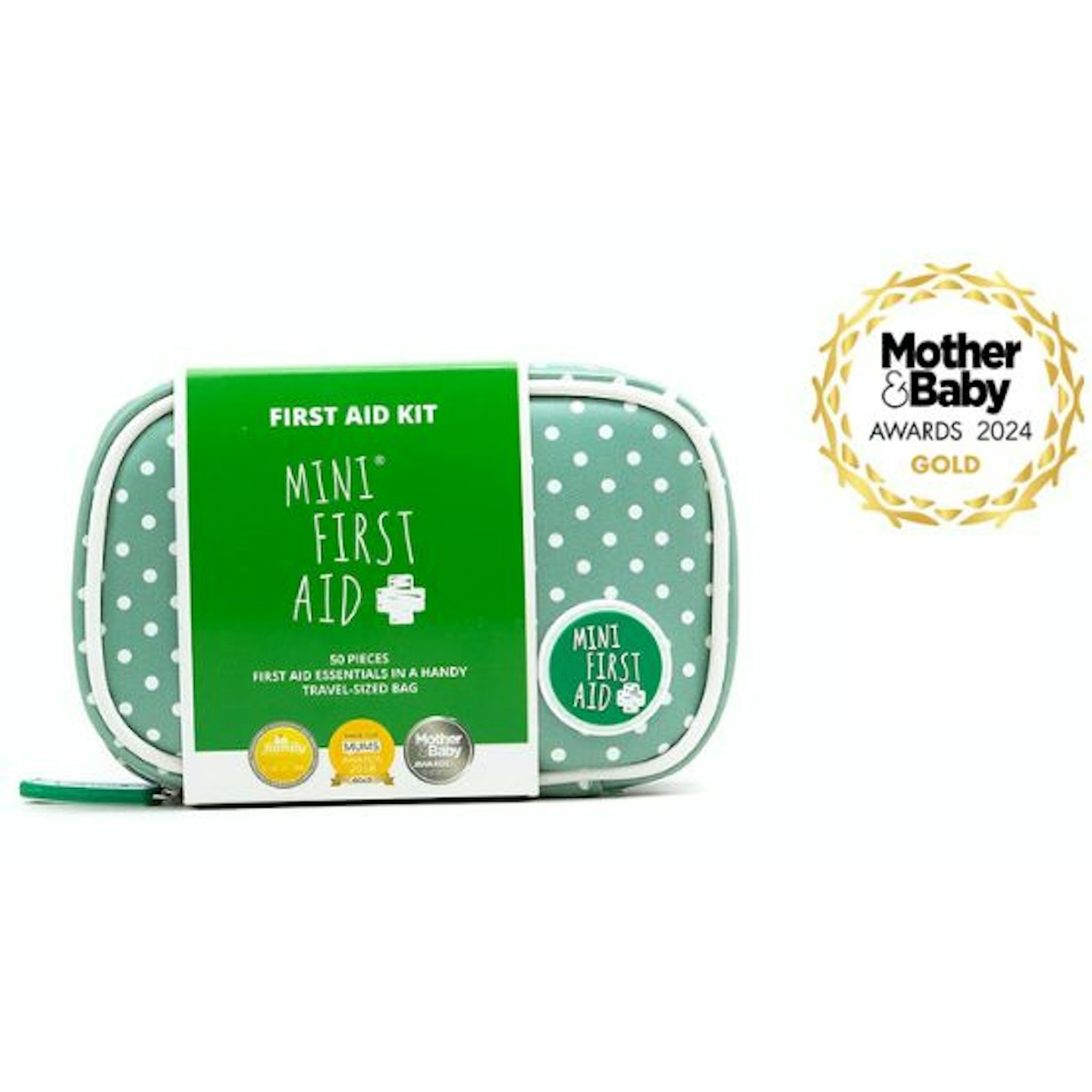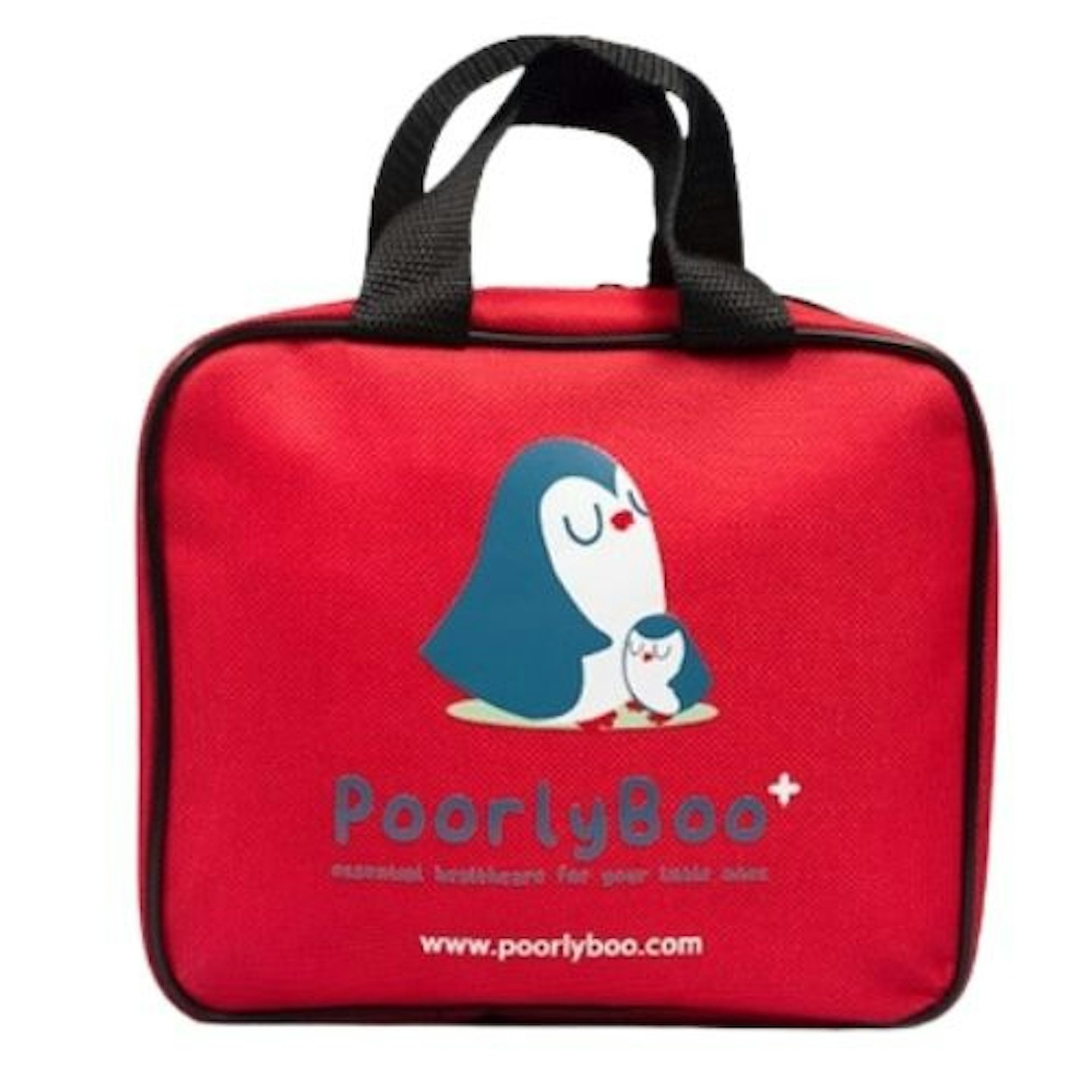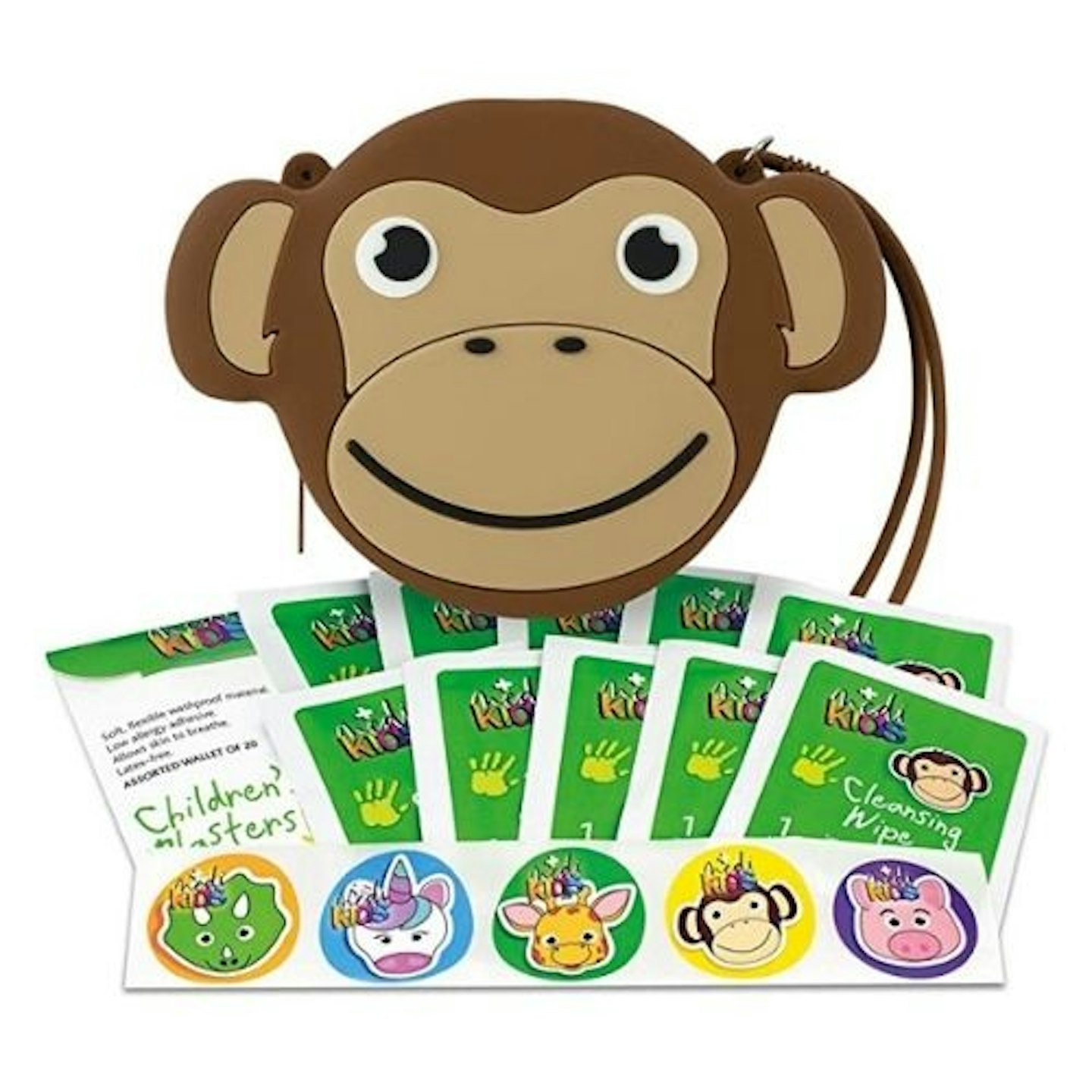There will come a time when you will need a baby first-aid kit. Common childhood accidents are the sort of thing that keeps you up at night but, unfortunately, accidents happen. It’s every parent’s worst nightmare to see their little one unwell or hurt, but a bump on baby's head, scratches, bites, and skinned knees are all part of life.
In those moments, it’s essential to have everything you need to act quickly, which is why we have compiled the best baby first-aid kits, so that should the time come when you need it, you will be prepared.
What is a baby first-aid kit?
A baby first-aid kit is a container full of everything you may need in the event of illness or a minor accident. A baby first-aid kit is no different to a family first aid kit but may include some equipment tailored to smaller children or specifically for babies.
Where should first aid kits be located?
Your first aid kit should be locked and kept in a cool, dry place out of the reach of children. It should be easily accessible in the event of an accident but out of reach of a curious hand.
What should your baby's first-aid kit include?
In the event of an accident, you want to be confident that you can get the supplies and information needed which could make all the difference in an emergency. Many of the items in your baby's first-aid kit can be used for your entire family. You can also add items as your child grow.
In your basic first-aid kit you will need:
• First-aid manual: Just in case you need to jog your memory.
• Plasters: These come in a range of different sizes and materials to cover minor cuts, scrapes or blisters.
• Gauze dressings: Good for larger cuts and grazes when a plaster isn't big enough.
• Two sterile eye dressings: For minor eye injuries or infections.
• Bandages: Tubular bandages are good for supporting strained joints, whereas a crepe bandage is used to secure dressings over larger cuts.
• Tweezers: Useful for removing splinters or thorns.
• Scissors: To help cut bandages.
• Alcohol-free cleansing wipes: To clean any cuts or grazes before applying a plaster or bandage.
• Baby thermometer (preferably digital): An essential in a baby first-aid kit to help detect if your baby has a fever.
• Skin rash cream, like Sudocrem: To help calm the rash.
• Painkillers: Speak to your pharmacist or GP to make sure this is suitable for your baby.
• Antiseptic cream: Such as Savlon, to help any minor wounds heal.
Do I need more than one first-aid kit?
It is a good idea to keep a large first aid kit in your home. We also recommend keeping a small first aid kit in the car for emergencies.
Where should you go if your baby is unwell?
The NHS advise that in the event of a medical or mental health emergency to call 999.
If you need urgent medical help or you're not sure what to do call 111.
You can take your baby to an urgent treatment centre (UTC) if your child needs urgent medical attention, but it's not a life-threatening situation.
If your baby needs an appointment that is non-urgent call your GP surgery. If the surgery is closed, a recorded message will tell you who to contact.
How to do Child CPR
Baby first-aid kit to buy
 Image: JoJo Maman Bebe
Image: JoJo Maman BebeWe adore that this first aid kit has been created with children in mind. LittleLife are a British designed and developed brand that ensures all of its equipment is tested to meet both UK and EU standards. This first aid kit includes a large selection of first aid supplies and an information leaflet in the event of an emergency. Plus, it is suitable from birth.
This kit includes:
Sudocrem, scissors, tweezers, forehead thermometer, vinyl gloves, nappy sacks, micropore tape, antiseptic wipes, medium and small eye pad dressings, low adherent dressing, fabric dressing strip, wound closure strips, gauze swabs, plasters, woven crepe bandages, triangular bandage, safety pins, burn gels, eyewash and 'little star' stickers.
Pros
- It includes essential items like bandages, antiseptic wipes, and other basic medical supplies
- Compact, lightweight and portable - perfect for travel
Cons
- Some might find it a bit bulky for day-to-day carrying
| Dimensions: | 17 x 7 x 12 cm |
| Weight: | 380 g |
| Material: | 100% Polyester |
 Mini First Aid
Mini First AidThe Mini First Aid Family First Aid Kit was awarded Gold for Best Safety Product at the Mother&Baby Awards 2024.
This is a brilliant first-aid kit for the whole family and awarded gold in the Mother&Baby 2022 awards. It contains 74 pieces of First Aid Essentials including the paramedic's recommended shears. The Kit comes with a handy First Aid guide and is the perfect size to fit under the buggy, in a change bag or keep stored away in the car.
This kit includes: Low-adherent wound pads, bandages, shears, adhesive tape, burn gel sachets, washproof plasters, non-alcohol Wipes, tweezers, safety pins, information leaflet, bravery stickers.
Mother&Baby writer, Hannah James said: " I keep this first aid kit in my car. Having three little boys means I often need a plaster or a bandage. It's fantastic as it has everything I need but it doesn't take up much room."
Read our full Mini First Aid Family First Aid Kit review.
Pros
- Compact and easy to carry around
- Contains 90 pieces of hospital grade medical supplies - perfect for everyday minor injuries
Cons
- Only suitable for minor injuries
| Dimensions: | 16 x 10 x 4 cm |
| Weight: | 250g |
 Image: Boots
Image: Boots www.boots.com
This Boots Children's first-aid kit has everything you will need in the event of a minor injury or accident. It is compact and can be kept in the house or taken out on day trips.
This kit includes:
Self-adhesive wound dressing, wound cleansing wipes, cohesive bandage, fabric plasters, wash proof plasters, microporous tape, eye bandage, eyewash, one pair of nitrile gloves, low adherent wound dressing, tweezer and an instant ice pack. As well as a Children's First Aid Guide and a sheet of bravery stickers.
Pros
- Comes with a guide with the information and advice on dealing with minor injuries
- Provides essential tools for treating cuts, grazes, bumps, bruises, and more
- Compact, perfect for on-the-go
Cons
- Basic supplies that are only suitable for minor injuries
 Image: Amazon
Image: AmazonOne of the most challenging things about when a baby or a child has an accident is keeping them calm. When your child is injured it is a natural response to panic. This first aid kit includes a cute Humpty Dumpty to help distract the injured patient so you can calm them and tend to their needs.
This kit includes:
65 essential medical-grade items that have been approved by the MHRA (Medical Healthcare Regulatory Authority.
Pros
- 62 essential medical grade items that have been checked and verified by the MHRA (Medical Healthcare Regulatory Authority)
- Adorable Humpty Dumpty waterproof storage bag
- Includes a cute Humpty Dumpty finger puppet distractor
- 100% Vegan
Cons
- Might be hard to find what you need due to the small size
| Dimensions: | 17 x 4.5 x 11 cm |
 PoorlyBoo
PoorlyBoo poorlyboo.com
PoorlyBoo was made a household name by celebrities like Mrs Hinch. The social media influencer hailed this first aid kit as a must-have for homes. It comes in a sweet carry-case which can be stored in your home or car.
This kit includes:
A 100 piece first-aid kit including an ice pack, thermal blanket, tweezers, scissors, bandages, plasters and more.
Pros
- Handle on storage bag for easy carrying makes it convenient to take the kit with you wherever you go
- A wide range of supplies to deal with various minor injuries and emergencies
Cons
- Great for minor injuries but not for more severe ijuries
| Dimensions: | Not specified |
 Image: Amazon
Image: Amazonwww.seton.co.uk
This child care first aid kit is packed full of all of the equipment needed in an accident. It is approved for emergencies and meets the guidelines by the Health and Safety Executive. It comes in a hygienic hard carry case.
This kit includes: cleansing wipes, eye pad dressings, finger tubular bandage with applicator, 2 gloves (pairs), large dressings, medium dressings, microporous tape, non-adherent dressings, plasters, gauze swabs, resuscitation device, 8 safety pins, scissors and triangular bandages.
Pros
- Comes in a durable case with handle making it easy to carry around
- Integral wall bracket in storage case allows easy storage
Cons
- Doesn't come with bravery stickers, making it more suitable for older children
| Dimensions: | 27 x 29.5 x 10 cm |
 Image: Amazon
Image: AmazonThis is a great first-aid kit to pop into your bag for day-to-day use. Although it is not equipped with all of the necessities to deal with more serious injuries, it is packed full of fun plasters and cleaning wipes. This is perfect for when you are out and about and you want to tend to a bump or graze.
This kit includes: fun print plasters, wipes and bravery stickers and a silicone monkey bag with strap.
Pros
- Fun monkey face silicon storage case
- Handy wrist strap to clip onto your kid’s bag for nursery or travel
- Silicon bag that can be easily wipe clean
Cons
- Only contains wipes, plasters and bravery stickers
| Dimensions: | 4.6 x 11 x 12 cm |
| Weight: | 150 g |
How to create a first aid kit
Not sure where to start when creating your own first aid kit? According to the NHS, a basic first aid kit should contain the following:
-
Plasters in a variety of different sizes and shapes
-
Small, medium and large sterile gauze dressings
-
At least 2 sterile eye dressings
-
Triangular bandages
-
Crêpe rolled bandages
-
Safety pins
-
Disposable sterile gloves
-
Tweezers
-
Scissors
-
Alcohol-free cleansing wipes
-
Sticky tape
-
Thermometer (preferably digital)
-
Skin rash cream, such as hydrocortisone or calendula
-
Cream or spray to relieve insect bites and stings
-
Antiseptic cream
-
Painkillers such as paracetamol (or infant paracetamol for children), aspirin (not to be given to children under 16), or Ibuprofen
-
Antihistamine cream or tablets
-
Distilled water for cleaning wounds
-
Eye wash and eye bath
Remember that for a baby first-aid kit, each item needs to be tailored to include equipment tailored to smaller children or specifically for babies.
How we chose
Like all our product recommendations, the best baby first aid kits are chosen based on a combination of real-world testing from our burgeoning army of mum testers and our experienced editorial team and product specialists. Where we can, we also consult experts who specialise in that field, to ensure you get the right advice along with the right product.
At times when we can’t get our hands on something personally, we’ll select products only from reputable brands, scouring reviews, forums and real parent experience to ensure all products are fit for use and deserve a space in your home.
For baby first aid kits, we looked at factors including size, what products are included in the kit, and whether there were any helpful extras, such as first aid instructions.
Baby first aid kits FAQs
Do I need a baby first aid kit?
We'd say it's always a good idea to have a baby first aid kit when you're out and about. Having one allows you to quickly deal with cuts and grazes, insect bites, and other mishaps.
As every parent knows, it only takes a split second for a child to go splat, and if you're out in the woods, or at the park (for example), there isn't necessarily a first aid kit available from elsewhere. Having one in your bag means you are prepped and ready in case of any minor mishaps.
Do first aid kits expire?
According to St John's Ambulance, first-aid kits can expire. It is recommended that you dispose of and replace items when they pass their expiry date. This includes items such as plasters, which can lose their adhesive properties, and bandages, which can lose their sterility over time.
Sterile cleansing wipes and gloves can also become less effective and less sterile over time. Most sterile products have an expiry date on the packaging, so you can easily spot when an item may need replacing.
Why you can trust us
At Mother&Baby, our mission is to provide accurate and reliable reviews, ensuring our readers receive honest and transparent information about the best products available.
Our testers are either pregnant, or real parents with a baby or toddler. This could be members of our editorial team, freelance parenting journalists or external reviewers from the Mother&Baby awards. Our Mother&Baby Awards are renowned in the industry and are among the most highly respected product awards for baby and parenting products. Every year, we arrange for thousands of independent parent reviewers to test the latest products on the market.
We don't accept payment from manufacturers for product reviews, and maintain our editorial independence. While we do work with commercial partners on advertorials, these will always be clearly labelled.
Our writers have full control over their content, ensuring that products are selected based solely on the needs of our readers. While we may earn commissions or other compensation from links on our website, this does not affect our product choices. These links allow us to continue offering valuable consumer advice, without compromising the integrity of our reviews. We are always honest in our reviews, and we won't recommend products that we wouldn't spend our own money on.
Read more about how we test and why you should trust us.
Hannah Carroll is a Senior Digital Writer at Bauer Media, specialising in product reviews, how-to guides, and listicles. With a background in Journalism and experience writing for outlets like Mother&Baby and Grazia, Hannah brings a wealth of insight into family life and practical home solutions. As a mother of three, she uses her first-hand knowledge of parenting to offer honest, relatable advice on everything from family tech to fashion and home décor.
